A fungal infection is sometimes called a “berry death” for its ability to ruin a crop. Effective measures against mildew on currants will help get rid of the threat. To do this, plants are treated with fungicides, observe agricultural practices on the site and additionally apply folk remedies.
Material Content:
Causes and signs of powdery mildew on currants
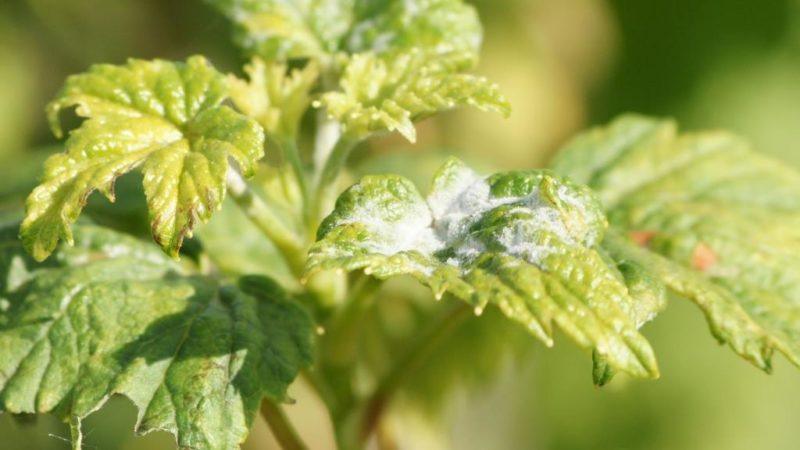
A fatal disease is caused by the microscopic fungus spheroeca (Sphaerotheca mors-uvae). The parasite hibernates in the apical buds of currants, on stems, and resumes its life cycle in spring. In April and May, the wind carries small brown spores. The mycelium develops on the surface of leaves and ovaries in June, when the most favorable temperature conditions and high humidity.
Powdery mildew is promoted by sucking pests, crowding of plants, and rainy weather.
The main signs of powdery mildew on currants:
- Whitish spots appear on young shoots, leaves and ovaries.
- Plaque becomes gray, dense, then resembles brown felt.
- Leaves lose their natural color, curl.
- The berries are covered with a gray-brown coating.
Powdery mildew affects blackcurrant more strongly, yield losses reach 80%. Redcurrant is less susceptible to fungal infection. The name of the disease reflects the two most significant signs of infection: the appearance of powdery coating and transparent drops on the leaves. White spots are formed by mycelium or mycelium, consisting of thin threads.
How to get rid of powdery mildew?
The rate of development of the disease, the inevitability of crop loss lead to despair for gardeners, summer residents and farmers. To cope with the infection will require patience and perseverance. Powdery mildew control measures begin to be applied before the leaves appear, although the peak of development occurs in the summer season.
Biofungicide control
Biological products - natural means for the destruction of pathogens of plants. Biofungicides, as a method of combating fungus, have advantages and disadvantages. They do not harm the environment, are safe for humans and animals. Unfortunately, natural remedies are inferior in effectiveness to synthetic pesticides, they eliminate phytopathogens only at the initial stages of the disease.
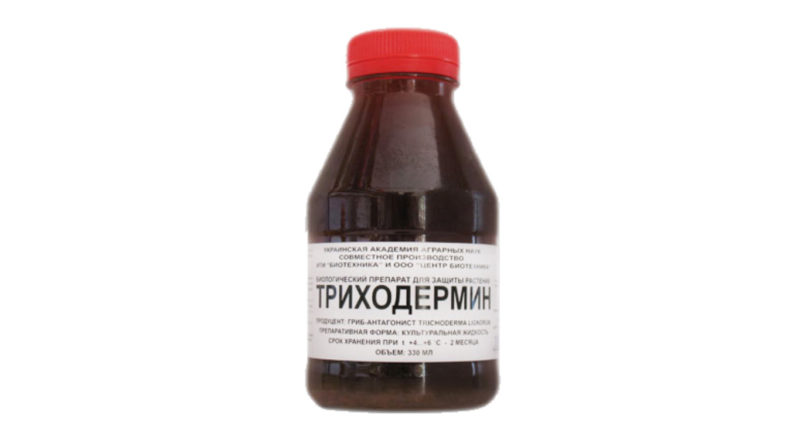
The drug "Trichodermin" inhibits the growth of mycelium, enriches the soil with nutrients. 200 g of powder is dissolved in 10 l of water, a tool is used to treat seedlings, soil, spraying and watering currant bushes.
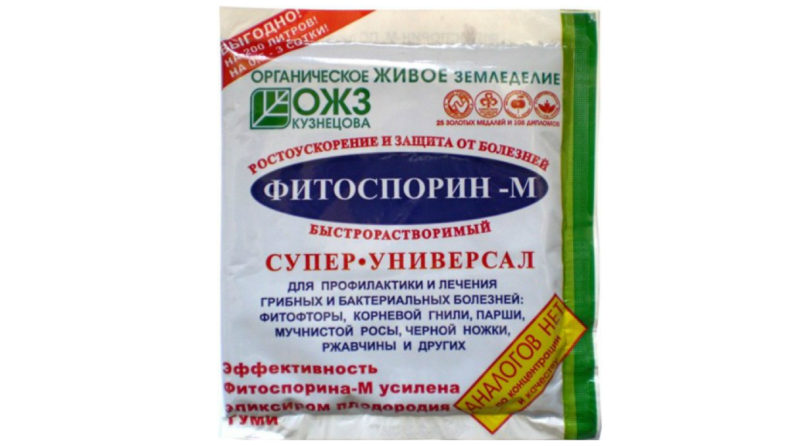
“Fitosporin-M” is a preparation based on a bacterial culture. Blocks the reproduction and development of the powdery mildew pathogen. The tool helps to get rid of the fungus, if applied at the first symptoms of the disease. To process the currant from the fungus, it is necessary to prepare a solution of 5 g of powder and 10 l of water. Spraying is carried out twice: during the period of leaf opening and when ovaries appear.
Powdery Mildew Chemicals
A solution of copper or iron sulfate (crystalline hydrates of copper or iron sulfate) is used to combat fungal infection. Pour in 10 l of water 100 g of copper or 300 g of iron sulfate. Stir the selected salt so that no grains remain. Filter the solution and carefully moisten the shoots and soil around the stems during budding.
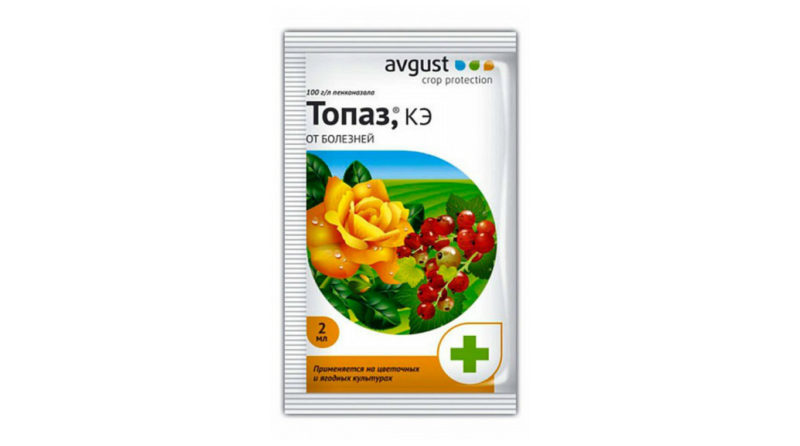
The fungicidal preparation "Topaz" stops the spore germination, and stops the reproduction of the parasite fungus. A solution of low concentration is prepared from 2 ml of the product and 10 l of water. The first time you can treat currants with a preventive purpose, the second - with the initial signs of the disease.

The drug "Fundazole" has a therapeutic and protective effect. Fungicide inhibits the development of the fungus, prevents the spread of infection. Spraying the bushes before blooming flower buds and after collecting the berries with a solution prepared from 10 g of powder and 10 l of water.
Treatment with folk remedies
An infusion of wood ash with soap is prepared - lye. First, 2-3 kg of ash are poured into a bucket, water is added and the mixture is heated to boiling for 30 minutes. They are mixed with 40 g of planed laundry soap, cool and treat the affected plants.
Before you get rid of powdery mildew with whey, study weather forecast for the next two weeks. The method works only in dry weather. Dilute the serum with half water and treat the currants 2 times a week. A film is formed on the leaves and berries, preventing the spread of spores and the germination of the mycelium.
Spray currants with a solution of baking soda with soap. Mix 2 tbsp. l soda and 10 liters of water, add 1 tbsp. l shredded laundry soap. Apply the solution at the first sign of a fungal disease. Folk remedies are used in the initial stages of the disease, they are not effective for severe damage.
Agricultural Compliance
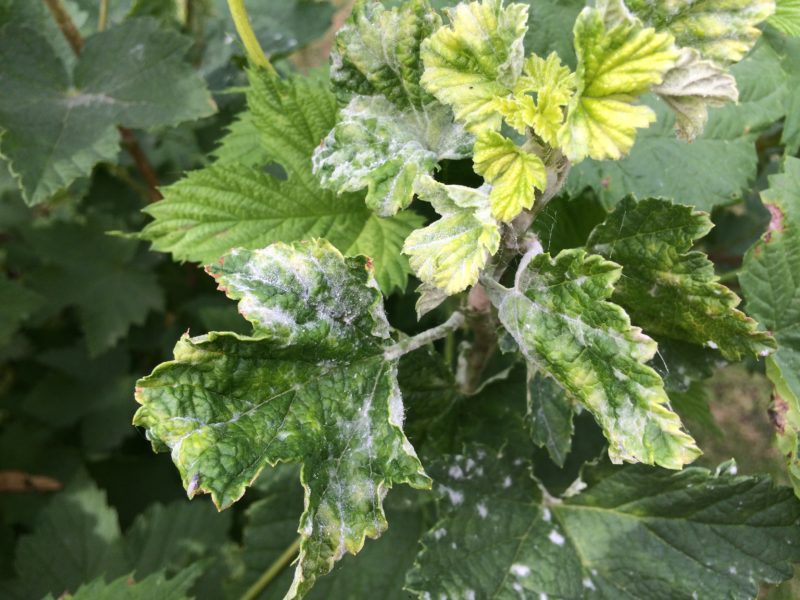
Currants in a moderately humid area, under normal lighting and fertilizer, without an excess of nitrogen, are less susceptible to powdery mildew. Do not allow excess water and water the bushes from above. Do not seal the plantings of gooseberries with currants, place nearby beds with cucumbers, a rose garden.
Mushroom spores winter on shoots and plant debris, germinate in spring and produce offspring. To interrupt the life cycle of the parasite helps the removal and destruction of the tops of shoots in the fall. It is also necessary to collect and burn or otherwise dispose of fallen leaves, berries. Only after this they dig the soil in the aisles and under the bushes.In the summer they fight weeds: weed or use herbicides. Agrotechnical methods do not eliminate the disease, but suspend the spread and development of its pathogen.
What is the danger of powdery mildew for currants?
The sphere library infects all terrestrial organs, destroys plant tissues and absorbs carbohydrates. After flowering, powdery powder appears on young shoots, ovaries and blossoming leaves. Affected bushes do not develop, young shoots blacken and dry out.
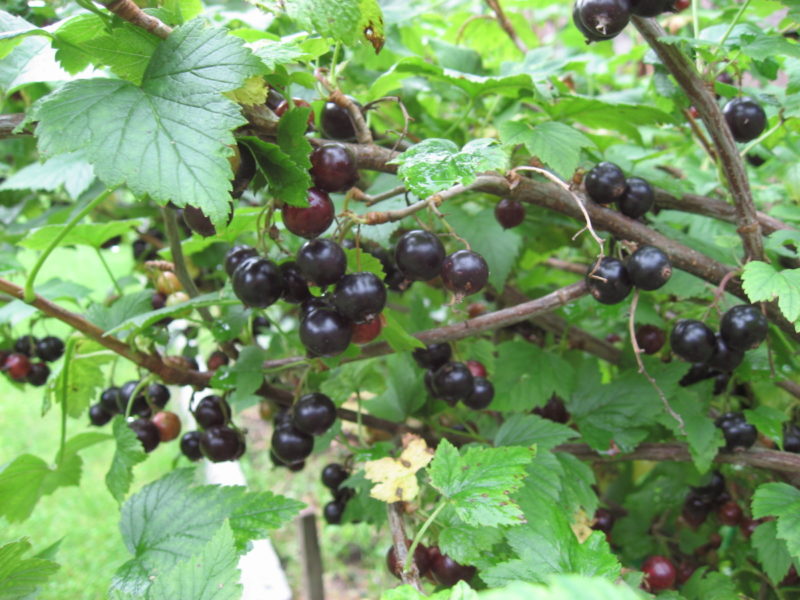
Sick leaf blades deform and dry out. The formed berries lose their natural color and shape, the rest fall off. Significant growth retardation and severe inhibition of diseased bushes are observed. Without human help, they have no chance of recovery. Fruits from affected plants are unfit for food and are potential allergens for people sensitive to various types of fungi.
Currant Disease Prevention
For planting new plantings, varieties that are immune to fungal infection are used. The resistance of blackcurrant to powdery mildew is relative. Under adverse conditions, all varieties are affected by the fungus and become ill.
Powdery mildew resistant currant varieties for the middle lane:
- "the charm";
- "Selechenskaya";
- "Baton";
- "Raisin";
- "Titania";
- "Good luck";
- "Exotic";
- "Summer resident".
Only healthy seedlings without signs of disease are selected for planting. Be sure to disinfect hands and garden tools that were used to work with plants. The ideal antiseptic for cleaning is medical alcohol.
Prevention of powdery mildew on currants is more reliable than treatment. In advanced cases, biofungicides are used in early spring or autumn. This will avoid the harmful effects of chemicals on the human body, eating fruits.












